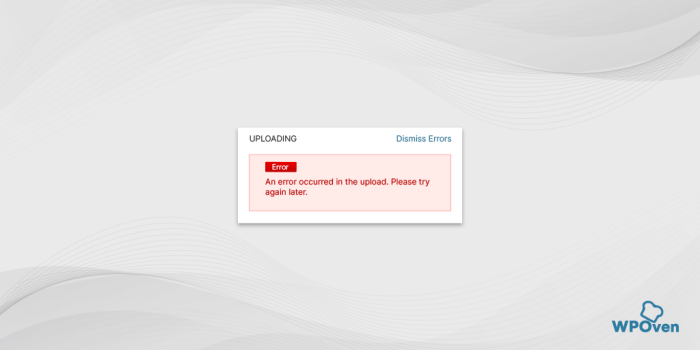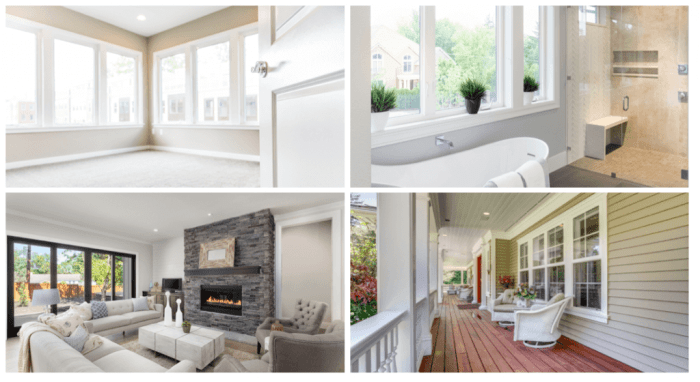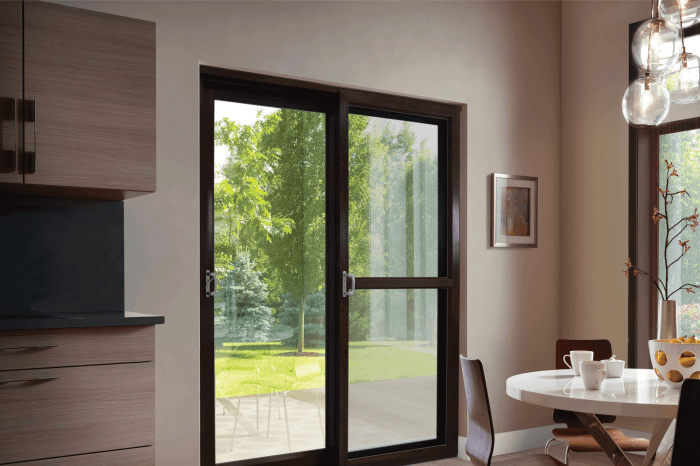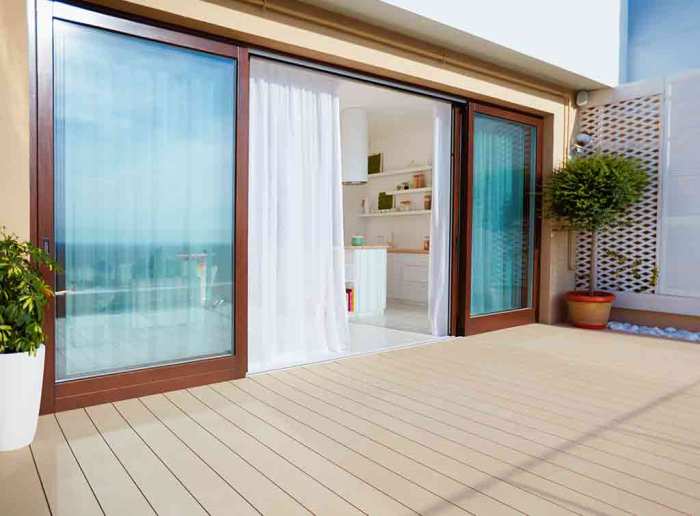Exterior Window Installation A Comprehensive Guide
Exterior window installation is a crucial aspect of home improvement, impacting both aesthetics and energy efficiency. This comprehensive guide delves into every stage of the process, from initial planning to post-installation care. We’ll explore various window types, installation methods, and safety precautions to ensure a successful and secure project.
Understanding the diverse range of exterior windows and their unique installation procedures is key. From single-hung to casement windows, each type presents specific challenges and considerations. We’ll provide detailed insights into selecting the right windows, preparing the exterior wall, and implementing the installation safely and efficiently. The accompanying tables offer a clear comparison of window types and installation complexities, making the decision-making process smoother.
Introduction to Exterior Window Installation
Exterior window installation is a multifaceted process encompassing careful planning, precise execution, and adherence to building codes. This process ensures the longevity and energy efficiency of the structure, while also improving aesthetics and functionality. It involves not only the physical act of mounting the windows but also considerations for weatherproofing, insulation, and structural integrity.
The correct installation procedure, utilizing the appropriate materials and techniques, is crucial for maintaining the structural integrity of the building and ensuring the window’s long-term performance. Different window types demand specific installation approaches to guarantee optimal performance and safety.
Types of Exterior Windows
Exterior windows are available in various styles, each with its own characteristics and installation requirements. Understanding these differences is critical for selecting the appropriate window type for a given application. Different styles offer varying degrees of energy efficiency, security, and aesthetic appeal.
- Single-hung windows: These windows feature a single movable sash, typically the lower one, that operates vertically. Installation involves careful alignment of the window frame to the opening, ensuring proper sealing and secure anchoring to the structure. They are often a cost-effective choice for smaller openings and simpler designs.
- Double-hung windows: These windows have two movable sashes, both operating vertically. Installation requires precise measurements and alignment to ensure smooth operation and efficient sealing. The ability to open both sashes allows for excellent ventilation.
- Casement windows: These windows open horizontally, like a door, on hinges. Installation necessitates the use of strong hinges and secure fastening mechanisms. The opening mechanism allows for extensive ventilation, but the design needs to accommodate for potential wind pressure.
- Awning windows: These windows open outward from the top. Their installation requires specific considerations for proper drainage and weather sealing, as they can be less secure than other types.
- Sliding windows: These windows slide horizontally within the frame. Installation must include a smooth and sturdy track system to ensure effortless movement and maintain the window’s sealing properties.
Materials Used in Exterior Window Installation
A variety of materials are used in exterior window installation, each with specific properties that influence the window’s performance and longevity. Selection of materials is critical to the overall integrity and longevity of the installation.
- Window frames: Common materials include wood, vinyl, aluminum, and fiberglass. Each material has its own strengths and weaknesses in terms of durability, insulation, and cost. For example, vinyl frames are known for their low maintenance and resistance to rot and warping.
- Glazing materials: Various types of glass, including tempered glass and insulated glass units (IGUs), are used for the window panes. IGUs are commonly used for their superior energy efficiency.
- Sealants and caulk: These materials provide crucial weatherproofing and prevent air and water leaks. Proper application is essential to maintain the window’s energy efficiency.
- Hardware: Hinges, locks, and other hardware components are essential for the window’s functionality. High-quality hardware contributes to smooth operation and security.
Importance of Proper Exterior Window Installation
Proper exterior window installation is vital for several reasons, including energy efficiency, structural integrity, and safety. A well-installed window contributes significantly to a building’s overall performance.
- Energy efficiency: Properly sealed windows minimize energy loss, leading to lower energy bills and a reduced environmental impact.
- Structural integrity: A correctly installed window is securely attached to the building, preventing damage and ensuring structural stability.
- Weather resistance: Proper sealing and installation help protect the building from water damage, drafts, and wind pressure.
- Safety: Well-installed windows prevent unauthorized entry and enhance the overall safety of the structure.
Window Installation Complexity Comparison
The complexity of window installation varies significantly based on the window type.
| Window Type | Installation Complexity |
|---|---|
| Single-hung | Low |
| Double-hung | Medium |
| Casement | Medium |
| Awning | Medium-High |
| Sliding | Medium |
Planning and Preparation

Source: wpoven.com
Careful planning is crucial for a successful exterior window installation. This phase sets the stage for a smooth, efficient, and ultimately, high-quality installation. Thorough preparation minimizes potential issues and ensures the project aligns with your vision. It also helps in managing costs and timelines effectively.
Accurate measurements, proper material selection, and choosing the right installer are key components in achieving a successful installation. These elements directly impact the final outcome and the overall satisfaction with the project.
Accurate Measurements and Blueprints
Accurate measurements are paramount to a successful window installation. Errors in measurement can lead to costly adjustments, fit issues, and even damage to the existing structure. Blueprints provide a detailed representation of the existing building’s layout, highlighting critical dimensions and structural elements. This ensures that the new windows integrate seamlessly with the existing design. Referring to blueprints and taking meticulous measurements minimize the risk of miscalculations. Using laser measuring tools can enhance precision.
Window Selection Criteria
Selecting the right windows is a critical aspect of the installation process. Consider factors like energy efficiency, material durability, aesthetic appeal, and maintenance requirements. Different window types offer varying levels of insulation and security. For example, double-paned windows are typically more energy-efficient than single-paned ones. The material used in the window frame, such as vinyl or wood, impacts both durability and maintenance. Color choices and design styles should complement the existing architectural features. Budget constraints should also be factored in when considering the cost of different window types.
Choosing the Right Installer
Selecting a reputable and qualified installer is essential for a successful installation. Look for installers with a proven track record, positive customer reviews, and necessary licenses and insurance. A skilled installer can ensure the job is done correctly, minimizing the risk of future problems. Verify the installer’s experience in handling similar projects and their ability to adhere to safety protocols. Inquire about their warranties and guarantees to protect your investment. Ask for references from previous clients to assess their reputation.
Essential Tools and Materials
A comprehensive list of tools and materials is necessary for a smooth installation process. This will ensure that the project proceeds efficiently and avoids unnecessary delays. Essential tools might include measuring tapes, drills, saws, and safety equipment. The necessary materials depend on the specific type of window being installed, including the frame, glass, and sealant. Having a detailed checklist of the required tools and materials ensures nothing is overlooked.
Window Replacement Measurement Steps
| Step | Description |
|---|---|
| 1 | Mark Existing Window Frame: Carefully mark the perimeter of the existing window frame using a marker or chalk. This establishes the boundaries for the new window’s placement. |
| 2 | Measure the Opening: Precisely measure the width, height, and depth of the window opening. Include any necessary deductions for trim or other factors. |
| 3 | Verify Measurements: Double-check all measurements to avoid any errors. A second set of eyes can be helpful to verify accuracy. |
| 4 | Record Measurements: Document all measurements meticulously in a log or on a blueprint for future reference. |
| 5 | Compare with New Window Specifications: Match the measured dimensions with the specifications provided by the window manufacturer. |
Installation Procedures
The successful installation of exterior windows hinges on meticulous preparation and precise execution. Proper techniques ensure a secure, weather-tight fit, enhancing the longevity and aesthetic appeal of the finished project. Careful attention to detail at each stage is paramount.
Preparing the Exterior Wall
Proper wall preparation is crucial for a strong and durable window installation. This involves ensuring the wall surface is clean, sound, and adequately prepared to receive the window frame. Inspect the wall for any existing damage, such as cracks or loose mortar. These areas must be repaired or replaced before installation. Remove any debris or loose material from the wall surface. The wall’s surface should be smooth and free of obstructions that could interfere with the window frame’s installation. Applying a bonding agent to the wall surface can enhance adhesion and provide a stable base for the window frame.
Installing Window Frames and Sashes
Precise installation of the window frame and sashes is essential for a watertight seal and a long-lasting installation. First, the frame is carefully positioned on the prepared wall, ensuring proper alignment and level. The frame’s dimensions should match the pre-measured opening. Securing the frame to the wall using appropriate fasteners and ensuring a snug fit is critical. Next, the sashes are fitted into the frame, aligning them smoothly and securely. Checking for proper operation of the window’s opening and closing mechanisms is paramount. The sashes should be easily operable and move smoothly without any binding or resistance.
Sealing and Weatherstripping Windows
A comprehensive sealing and weatherstripping process is vital for maintaining a tight seal and preventing air and water infiltration. Caulk or sealant should be applied to all joints and gaps around the window frame, ensuring a complete and even seal. Weatherstripping is applied to the frame’s edges and the window sash, providing an additional layer of protection against drafts and moisture. This step is crucial for preventing energy loss and maintaining the window’s structural integrity. Use high-quality caulk and weatherstripping materials suitable for the climate and expected conditions.
Securing Windows to the Exterior Wall, Exterior window installation
Securely anchoring the window to the exterior wall is crucial for the window’s structural integrity and longevity. The chosen fasteners should be appropriate for the wall material and the window’s weight. Common methods include using screws, anchors, or specialized window fasteners. The screws must be long enough to penetrate through the wall and into a solid support structure. Thorough anchoring is key to preventing the window from shifting or detaching from the wall.
Window Fasteners
Various types of window fasteners are available, each with specific applications. Expansion anchors are suitable for concrete or masonry walls, providing a strong and reliable hold. For wood framing, screws are a common choice, offering a secure attachment. Use appropriate anchors and fasteners for different wall types to guarantee a strong and reliable installation.
Window Installation Techniques
| Window Type | Installation Technique |
|---|---|
| Double-hung windows | Frames are secured to the wall, and sashes are inserted into the frame. Sashes are hung from the frame’s rails, and proper alignment is essential. |
| Casement windows | Frames are attached to the wall. The hinges are installed, and the window is positioned correctly. Proper alignment and secure mounting are critical. |
| Awning windows | Frames are attached to the wall. Hinges are installed on the frame, and the window is positioned. The window’s opening and closing mechanisms should be checked for smooth operation. |
| Sliding windows | Frames are attached to the wall. The tracks are installed, and the window is guided through the tracks. Alignment and proper track installation are crucial for smooth operation. |
Safety Precautions: Exterior Window Installation
Exterior window installation, while often rewarding, necessitates meticulous attention to safety protocols. Failure to adhere to these procedures can lead to severe injury, property damage, and even fatalities. Implementing robust safety measures is paramount to a successful and incident-free installation.
Essential Safety Gear
Proper safety gear is crucial for protecting installers from potential hazards. A comprehensive safety kit should include fall protection systems, eye protection, and appropriate clothing. This equipment not only minimizes the risk of injury but also reflects a commitment to a safe work environment.
- Fall Protection Systems: These are absolutely essential for installations at heights. Harness systems, lanyards, and anchor points are vital components of a comprehensive fall arrest system. Using a safety harness is mandatory on any elevated work area, and a spotter or fall arrest system is required when working more than 10 feet above the ground.
- Eye Protection: Safety glasses or goggles should be worn to shield the eyes from flying debris, sharp objects, or chemical splashes. The use of face shields may be necessary in specific situations.
- Protective Clothing: Durable work clothing, such as hard hats, gloves, and waterproof gear, safeguards installers from cuts, abrasions, and the elements. The specific attire should match the potential risks associated with the installation.
Material Handling Procedures
Safe material handling minimizes the risk of injury and damage. Heavy materials must be handled with proper lifting techniques to avoid strain or injury. Using mechanical aids, such as dollies or hand trucks, is essential for moving large or heavy items. Proper securing of materials prevents accidental falls or shifts during transportation.
- Lifting Techniques: Always use proper lifting techniques, keeping the back straight and engaging core muscles. Avoid twisting or straining during the lifting process. If a load is too heavy for one person, use a team lift and ensure everyone is properly instructed.
- Mechanical Aids: Use hand trucks, dollies, or other mechanical aids to move heavy materials. This reduces the risk of strain or injury and increases efficiency.
- Securing Materials: Secure materials on the truck or during transport to prevent shifting or falling. Use straps, nets, or other appropriate securing devices.
Potential Hazards and Mitigation
Various hazards can arise during exterior window installation, including falls from heights, cuts from sharp materials, and exposure to harsh weather conditions. Proactive measures can minimize these risks. Proper planning, comprehensive safety training, and strict adherence to safety procedures are crucial for accident prevention.
- Fall Hazards: Proper scaffolding, safety nets, and fall arrest systems are crucial to mitigate fall hazards. Always inspect equipment before use and ensure it is in good working order.
- Sharp Materials: Use appropriate protective equipment, such as gloves, to prevent cuts or lacerations. Proper handling and storage of sharp materials are critical.
- Weather Conditions: Adjust work schedules to avoid working in extreme weather conditions, such as heavy rain, high winds, or extreme temperatures. Take necessary precautions to protect installers from the elements.
Common Safety Violations
Ignoring safety procedures is a common pitfall. Common safety violations include working at heights without proper fall protection, improper material handling, and neglecting to use personal protective equipment (PPE). A robust safety culture emphasizes the importance of compliance with safety regulations.
- Working at Heights Without Fall Protection: One common violation is ignoring the requirement for fall protection systems, particularly on elevated surfaces.
- Improper Material Handling: Improper lifting techniques or using inadequate mechanical aids are significant safety hazards.
- Neglecting to Use PPE: Skipping personal protective equipment, such as safety glasses or gloves, is a widespread violation that significantly increases the risk of injury.
Safety Guidelines for Window Installers
| Safety Guideline | Description |
|---|---|
| Fall Protection | Utilize fall arrest systems and scaffolding for all elevated work. |
| Material Handling | Employ proper lifting techniques and mechanical aids for heavy materials. |
| Weather Conditions | Adjust work schedules to avoid working in extreme weather. |
| PPE Use | Adhere to all PPE requirements. |
| Training | Complete mandatory safety training before installation. |
Post-Installation Considerations
Completing exterior window installation is more than just fitting the frames; it’s about ensuring a seamless and long-lasting integration into the building’s exterior. This phase involves meticulous attention to detail, ensuring the window installation not only meets aesthetic expectations but also performs reliably and enhances the building’s overall integrity.
Finishing Exterior Wall
Properly finishing the exterior wall after window installation is crucial for maintaining the building’s structural integrity and aesthetic appeal. This entails carefully filling any gaps or voids created during the installation process. Using appropriate exterior-grade materials, like caulk and sealant, is essential for preventing water damage, air leaks, and pest infestations. This also contributes to the overall structural integrity of the building.
Importance of Caulking and Sealing
Caulking and sealing are critical steps in the post-installation process. They create a watertight barrier, preventing moisture from seeping into the wall cavity, and offer insulation against air infiltration. Proper application of sealant, with specific attention to the window frame, window edges, and any other gaps, is vital for long-term performance. Using high-quality, exterior-grade caulk is recommended to ensure durability and effectiveness. Moreover, choosing the right type of sealant for the specific application (e.g., silicone for weatherstripping, acrylic for general caulking) is essential.
Inspection Methods
Thorough inspection of the completed installation is paramount to ensuring quality and identifying any potential issues before they escalate. This process involves visually inspecting the window frames, the caulking and sealant application, and the surrounding wall areas. Checking for gaps, cracks, or irregularities in the installation, and the adherence of sealant, is important. Water penetration tests, where applicable, can identify any vulnerabilities in the sealing process. This inspection should also include verifying the proper operation of the window mechanisms, such as opening and closing.
Ventilation and Drainage
Proper ventilation and drainage are essential for preventing moisture buildup and rot. Ensuring the installation does not impede natural airflow and proper drainage around the window frames is vital. Consider the surrounding landscaping and drainage patterns to ensure water runoff away from the window frames. This also includes checking that the window frames do not interfere with the natural drainage of the surrounding area.
Warranty Procedures
Understanding and adhering to the warranty procedures for the windows and installation materials is critical. Different manufacturers have varying warranty terms. It is important to carefully review the warranty documents provided by the installer and window manufacturer, and to ensure all work complies with the warranty conditions. Record the date of installation and any relevant details for future reference.
Post-Installation Checks
A comprehensive checklist ensures quality control.
| Check Point | Description | Pass/Fail |
|---|---|---|
| Window Operation | Verify smooth opening and closing of all windows | Pass |
| Caulking/Sealant Application | Inspect for proper application, no gaps, and adherence | Pass |
| Wall Finishing | Examine for any imperfections or gaps in the wall around the windows | Pass |
| Water Penetration | Perform a water penetration test (if applicable) | Pass |
| Drainage | Confirm proper water runoff away from window frames | Pass |
| Ventilation | Verify that the installation does not obstruct natural ventilation | Pass |
Troubleshooting and Maintenance
Proper maintenance is crucial for ensuring the longevity and optimal performance of exterior window installations. Neglecting routine checks and cleanings can lead to premature deterioration, compromising the window’s structural integrity and energy efficiency. Addressing issues promptly, whether minor or significant, is essential to maintaining a comfortable and aesthetically pleasing environment.
Common Installation Problems
Various issues can arise during or after exterior window installation. These problems can stem from improper installation, material defects, or environmental factors. Identifying and resolving these issues promptly is key to preventing further complications and maintaining the window’s structural integrity and aesthetic appeal.
- Window sticking or difficult operation: This problem can be caused by improper alignment of the window frame, obstructions, or worn-out rollers and tracks. Regular lubrication of the moving parts and cleaning of the tracks can help maintain smooth operation. For example, accumulated debris or paint residue can hinder smooth movement.
- Leaks or drafts: These can be indicative of gaps around the window frame, damaged seals, or improperly installed weatherstripping. Addressing these issues through resealing or adjusting the window frame can effectively reduce drafts and energy loss. For example, a poorly fitted window can allow significant air leakage, increasing energy bills and reducing comfort.
- Water damage or rot: This typically results from inadequate waterproofing, improper drainage, or prolonged exposure to moisture. This necessitates prompt repair or replacement of affected components to prevent further deterioration and structural damage. For example, standing water around a window frame can lead to rot, requiring immediate repair or replacement.
- Warped or damaged window frames: This can stem from improper installation, extreme temperature fluctuations, or impacts. Corrective measures include adjusting or replacing the damaged components, ensuring the frame is securely fastened and aligned.
Troubleshooting Methods
A systematic approach to diagnosing problems is crucial. Careful observation, combined with understanding the mechanics of the window system, is vital. Start by inspecting the window’s exterior and interior for any visible signs of damage or misalignment. Then, evaluate the functionality of the window’s components, such as the handles, hinges, and locking mechanisms.
- Inspecting for leaks and drafts: Use a flashlight to check for gaps around the window frame and seal. Check weatherstripping for wear and tear. Apply a thin layer of soapy water to suspected leak areas. Bubbles indicate air infiltration.
- Addressing sticking windows: Clean the window tracks and apply lubricant to the rollers and hinges. If the issue persists, carefully check the alignment of the window frame and adjust as needed. Seek professional assistance if the problem persists.
- Repairing damage: For minor damage, consider using caulking, weatherstripping, or sealants to restore the window’s integrity. More significant damage may require replacing damaged components. Seek professional assistance for complex repairs.
Window Maintenance Procedures
Regular maintenance significantly extends the lifespan of exterior windows. This includes periodic cleaning, inspection, and lubrication.
- Cleaning: Regularly clean the window frame, glass, and exterior components to prevent the buildup of dirt, debris, and mildew. Use appropriate cleaning solutions and tools to avoid damage to the window’s finish.
- Lubrication: Regular lubrication of hinges, rollers, and tracks helps maintain smooth operation. Use a lubricant specifically designed for exterior window components.
- Inspection: Regularly check for signs of damage, wear, and tear. Address any issues promptly to prevent escalation. Pay close attention to seals, weatherstripping, and frame integrity.
Importance of Routine Inspections and Cleaning
Routine inspections and cleaning are essential for preserving the structural integrity, energy efficiency, and aesthetic appeal of exterior windows. They identify potential problems early, allowing for prompt and cost-effective repairs. Preventative maintenance can significantly reduce the need for costly replacements in the long run.
Importance of Routine Maintenance for Longevity
Regular maintenance is paramount for maximizing the lifespan of an exterior window installation. This proactive approach can prevent costly repairs and replacements down the road.
Summary Table of Common Window Problems and Solutions
| Problem | Possible Cause | Solutions |
|---|---|---|
| Window sticking | Improper alignment, debris, worn rollers | Clean tracks, lubricate rollers, adjust alignment |
| Leaks/Drafts | Gaps around frame, damaged seals | Reseal gaps, replace damaged seals, adjust frame |
| Water damage/Rot | Inadequate waterproofing, poor drainage | Repair or replace damaged components, improve drainage |
| Warped/Damaged Frame | Improper installation, extreme temps, impact | Adjust or replace damaged components, ensure proper installation |
Case Studies and Examples

Source: imgur.com
Real-world exterior window installations offer valuable insights into project challenges, solutions, and the nuances of different approaches. Analyzing successful and less successful projects provides valuable lessons for installers and clients alike. These case studies will illustrate various scenarios, emphasizing the importance of careful planning and execution in achieving optimal results.
This section explores diverse exterior window installations, highlighting the specific project challenges and the implemented solutions. It also examines the trade-offs between different installation methods, considering factors like budget, timeframe, and the desired aesthetic outcome. Detailed descriptions and comparisons will aid in understanding the complexities and rewards of each approach.
Residential Window Replacement in a Historic District
Careful planning and adherence to local regulations were crucial for a recent window replacement project in a historic district. The existing windows were outdated and inefficient, impacting the home’s energy performance. Preserving the historical character of the building while enhancing its energy efficiency was a key concern. The solution involved selecting replacement windows that closely matched the original style and materials, minimizing visual disruption. Professionals consulted with historical preservation authorities to ensure the project met all guidelines. This approach resulted in aesthetically pleasing and energy-efficient windows, while maintaining the building’s historical integrity.
Commercial Building Facade Renovation
A large-scale commercial building facade renovation project presented unique challenges. The old windows were damaged and needed complete replacement, posing logistical problems regarding access and temporary support structures. The solution involved a phased approach, replacing windows in sections to minimize disruption to the building’s operational activities. A detailed project schedule and communication plan were implemented to manage the timeline and stakeholder expectations. The outcome included a modernized and enhanced building facade, improved energy efficiency, and a smooth transition for the business operations.
High-Rise Building Window Installation
High-rise building window installations necessitate rigorous safety procedures and specialized equipment. The project encountered challenges related to precise positioning, material handling, and adhering to strict safety regulations. Solutions included using specialized hoisting equipment and employing experienced climbers for safe installation at great heights. Close coordination between the installation team and building management ensured adherence to safety protocols and minimal disruption to building occupants. This example demonstrates the importance of comprehensive safety planning and the need for specialized equipment in high-rise installations.
Comparison of Installation Methods
- Frame-by-frame installation: This approach involves assembling the window frame on the ground and then lifting it into place. It’s generally suitable for simpler projects where precise positioning is less critical. This method often involves more labor but can be more cost-effective.
- Pre-assembled unit installation: This method involves installing pre-assembled window units. This is beneficial for projects needing speed and efficiency. However, the pre-assembled units might not accommodate every unique site condition.
- Custom-fabricated installation: This method allows for customized solutions, offering maximum flexibility. It may involve more design complexity and a longer project duration. This approach is ideal for projects demanding unique window sizes, shapes, or materials.
Visual Descriptions of Window Types
- Double-hung windows: These windows feature two sashes that slide vertically, allowing for adjustable ventilation. This type is common in residential buildings and offers good natural light.
- Casement windows: These windows open outward using hinges on one side. They are known for their high ventilation potential, but their outward-opening nature might not be suitable for all applications.
- Awning windows: These windows open outward from the top. They are ideal for maximizing ventilation in warmer climates.
Summary Table of Case Studies
| Case Study | Challenges | Solutions | Outcomes |
|---|---|---|---|
| Residential Historic District | Preserving aesthetics, meeting regulations | Matching original style, consulting with authorities | Aesthetically pleasing, energy-efficient windows |
| Commercial Facade Renovation | Logistical issues, minimizing disruption | Phased approach, detailed schedule | Modernized facade, improved efficiency |
| High-Rise Building | Safety, precise positioning | Specialized equipment, rigorous safety protocols | Safe and efficient installation |
Conclusion
In conclusion, exterior window installation is a multifaceted process requiring careful planning, precise execution, and adherence to safety protocols. This guide has covered the entire spectrum, from initial design to ongoing maintenance. By following the steps Artikeld, homeowners can confidently embark on this project, ensuring a high-quality installation that enhances both the value and comfort of their home. The various case studies presented illustrate the practical application of the knowledge shared, providing a practical perspective on real-world scenarios.





